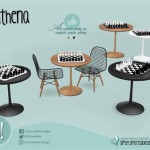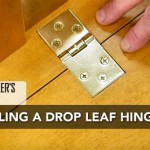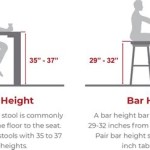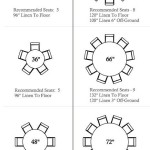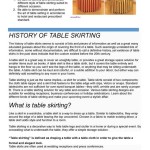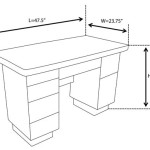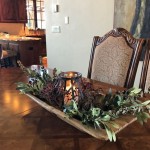DIY Gas Fire Pit Table: A Comprehensive Guide
The allure of a crackling fire on a cool evening is undeniable. A gas fire pit table combines this appeal with the functionality of an outdoor table, offering a focal point for relaxation and entertainment. Constructing a gas fire pit table as a do-it-yourself (DIY) project allows for customization, cost savings, and the satisfaction of creating a unique outdoor feature. However, safety is paramount when working with gas and fire; meticulous planning and adherence to safety guidelines are essential.
This article provides a detailed guide to building a DIY gas fire pit table, covering essential aspects from material selection and design to construction and safety considerations. It delves into the necessary tools, step-by-step instructions, and critical precautions to ensure a successful and safe project. The information presented aims to empower individuals with the knowledge required to confidently undertake this rewarding DIY endeavor.
Planning and Design Considerations
Before commencing the construction process, thoughtful planning is crucial. The design should consider the intended purpose of the fire pit table, the available space, and the desired aesthetic. Numerous design options exist, ranging from simple square or rectangular tables to more elaborate circular or custom shapes. The size of the table should be proportionate to the surrounding area, ensuring comfortable seating and ample space for movement.
Material selection significantly impacts the overall look and durability of the fire pit table. Popular choices include concrete, stone, brick, wood, and metal. Concrete offers a modern, industrial aesthetic and is highly durable and heat-resistant. Stone and brick provide a more traditional and rustic appearance. Wood, while visually appealing, requires careful treatment and placement to minimize fire risk. Metal frames can provide structural support and a sleek, contemporary look.
The fire pit insert, also known as the burner system, is a critical component. These inserts are available in various sizes and heat outputs (measured in BTUs – British Thermal Units). Selecting an appropriate BTU rating depends on the desired heating area and the overall size of the fire pit table. A larger table and a larger heating area require a higher BTU rating. Propane and natural gas are the two primary fuel options. Propane requires a separate propane tank, while natural gas necessitates a connection to a natural gas line. The choice depends on accessibility and personal preference. Natural gas typically offers a lower operating cost, but requires professional installation to ensure safety.
Ventilation is a key consideration for safe and efficient operation. Adequate ventilation around the burner system is necessary to prevent gas buildup and ensure proper combustion. Ventilation holes or gaps should be incorporated into the table design, particularly near the base where the gas lines and burner components are located. Insufficient ventilation can lead to dangerous conditions, including explosions.
Finally, consider the finish and any additional features. A sealant or protective coating can enhance the durability and weather resistance of the fire pit table. Decorative elements, such as fire glass, lava rock, or ceramic logs, can add to the visual appeal and distribute heat evenly. Accessories, such as a lid or cover, can protect the burner system from the elements when not in use.
Construction Process: A Step-by-Step Guide
The construction process varies depending on the chosen design and materials. However, the following steps outline a general approach to building a DIY gas fire pit table:
1. Gather Materials and Tools: Before starting, assemble all necessary materials, including the table building material (concrete, stone, wood, etc.), fire pit insert, gas line, propane tank (if using propane), connectors, sealant, and decorative elements. Essential tools include a measuring tape, level, saw (depending on the material), drill, screwdriver, wrench, pipe cutter, and leak detector solution (for gas connections).
2. Build the Table Frame: Construct the table frame according to the chosen design. This involves cutting the materials to the required dimensions and assembling them using appropriate fasteners (screws, nails, adhesive, etc.). Ensure the frame is sturdy and level. For concrete or stone tables, consider using a mold or form to shape the material. If using wood, treat it with a fire-retardant coating, especially in areas close to the burner. For metal frames, welding or bolting the components together provides a robust structure.
3. Install the Fire Pit Insert: Position the fire pit insert in the center of the table frame. Ensure it is securely mounted and level. Follow the manufacturer's instructions for installation. This often involves cutting a hole in the tabletop to accommodate the insert. The hole should be slightly larger than the insert’s outer diameter to allow for easy removal and maintenance.
4. Connect the Gas Line: This step requires extreme caution. Consult with a qualified professional if you are not comfortable working with gas lines. If using propane, connect the propane tank to the fire pit insert using a gas line and regulator. Ensure all connections are tight and secure. If using natural gas, connect the fire pit insert to the natural gas line using a gas line, shut-off valve, and appropriate fittings. Professional installation is highly recommended for natural gas connections. It is vital to use gas-rated Teflon tape on all threaded connections to ensure a tight seal.
5. Check for Leaks: After connecting the gas line, thoroughly check for leaks using a leak detector solution (soapy water). Apply the solution to all gas line connections and look for bubbles, which indicate a leak. If a leak is detected, immediately turn off the gas supply and tighten the connection. Repeat the leak test until no leaks are found. Never use a flame to check for leaks.
6. Add Decorative Elements: Once the gas connections are secure and leak-free, add the decorative elements, such as fire glass, lava rock, or ceramic logs. Distribute the elements evenly around the burner to create a visually appealing and functional fire display. Ensure the decorative elements do not obstruct the burner ports or ventilation openings.
7. Finish the Table: Apply a sealant or protective coating to the table surface to enhance durability and weather resistance. Allow the sealant to dry completely before using the fire pit table. Consider adding a lid or cover to protect the burner system when not in use. Ensure the lid is removed before operating the fire pit.
Safety Precautions and Considerations
Safety is the paramount concern when building and operating a gas fire pit table. Adhering to the following safety precautions is crucial to prevent accidents and ensure safe operation:
1. Gas Safety: Working with gas requires extreme caution. If you are not comfortable working with gas lines, consult with a qualified professional. Always turn off the gas supply before performing any maintenance or repairs. Never attempt to modify the gas line or burner system without proper knowledge and expertise. Ensure all gas connections are tight and leak-free. Use a leak detector solution to check for leaks after installation and periodically thereafter. Never use a flame to check for leaks.
2. Ventilation: Adequate ventilation is essential for safe and efficient operation. Ensure the fire pit table is located in a well-ventilated area and that there are sufficient ventilation openings around the burner system. Insufficient ventilation can lead to gas buildup and potentially dangerous conditions. Never operate the fire pit table in an enclosed space.
3. Clearance: Maintain adequate clearance around the fire pit table. Keep flammable materials, such as furniture, trees, and bushes, at least 3 feet away from the fire pit. Ensure there are no overhead obstructions, such as awnings or tree branches. Children and pets should be supervised at all times when the fire pit is in use. It's advisable to have a fire extinguisher or readily available water source nearby in case of emergency.
4. Burner System Maintenance: Regularly inspect the burner system for any signs of damage or corrosion. Clean the burner ports periodically to ensure proper gas flow and combustion. Replace any damaged or worn parts immediately. Follow the manufacturer's instructions for burner system maintenance and operation.
5. Carbon Monoxide Safety: While gas fire pits primarily produce carbon dioxide, incomplete combustion can lead to carbon monoxide production. Carbon monoxide is a colorless and odorless gas that can be deadly. Ensure the fire pit is properly ventilated. Consider installing a carbon monoxide detector in the vicinity, especially if the fire pit table is located near enclosed structures.
6. Local Codes and Regulations: Before building a gas fire pit table, check with local authorities regarding any applicable codes and regulations. Some jurisdictions may require permits or inspections for gas-related appliances. Adhering to local codes ensures compliance and promotes safety.
Building a DIY gas fire pit table can be a rewarding project that enhances outdoor living spaces. Thorough planning, careful construction, and diligent adherence to safety precautions are essential for a successful and safe outcome. By following the guidelines outlined in this article, individuals can confidently create a beautiful and functional fire pit table that provides years of enjoyment.

Diy Outdoor Fire Table Hamilton Park Home

Diy Outdoor Fire Table Hamilton Park Home

16 Diy Gas Fire Table Ideas Pit Firepit

How Do I Build A Diy Fire Pit For Natural Gas Starfire Direct

This Fire Pit Has Been Constructed Within A Rustic Timber Table Via Renoguide Pallet Diy Propane

How To Make An Outdoor Gas Fireplace With Diy Pete

Diy Outdoor Fire Table Hamilton Park Home

How To Build A Gas Fire Pit Coffee Table Firepits Direct Learning Center

Diy Fire Pit Table Build Outdoor Furniture

Diy Propane Fire Pit Outdoor Gas

